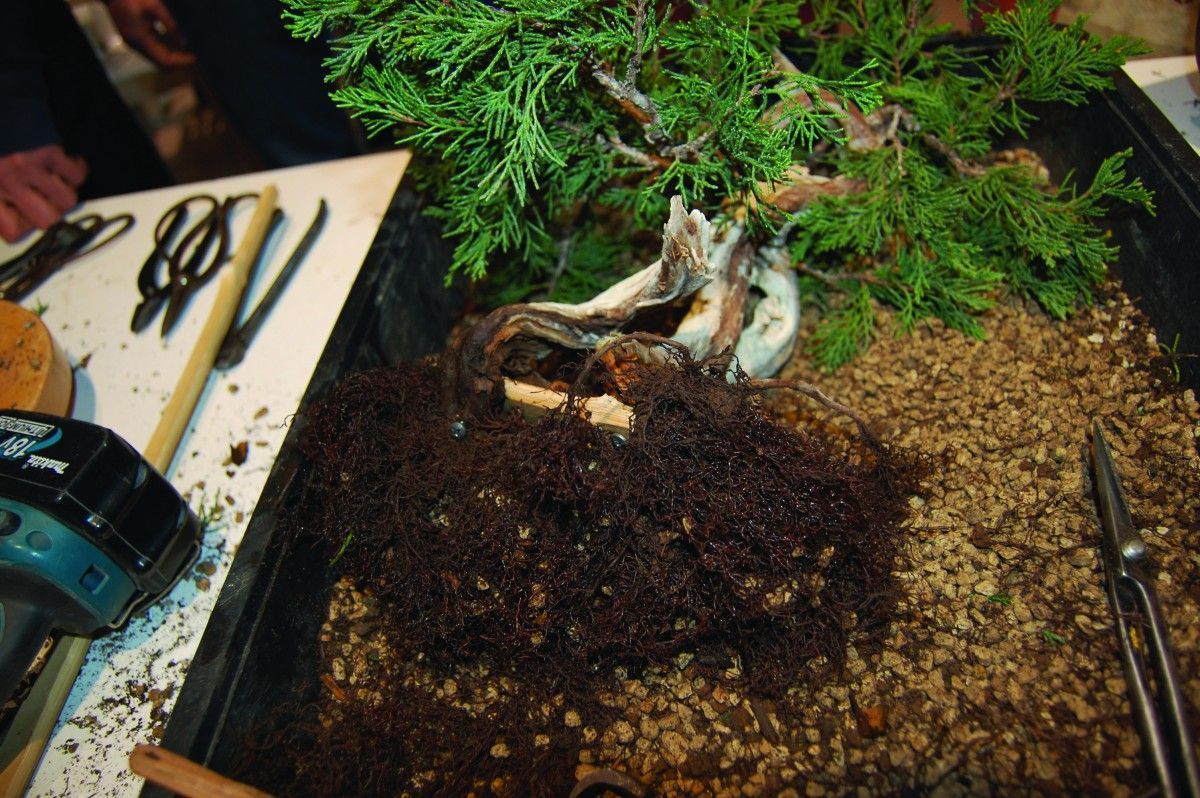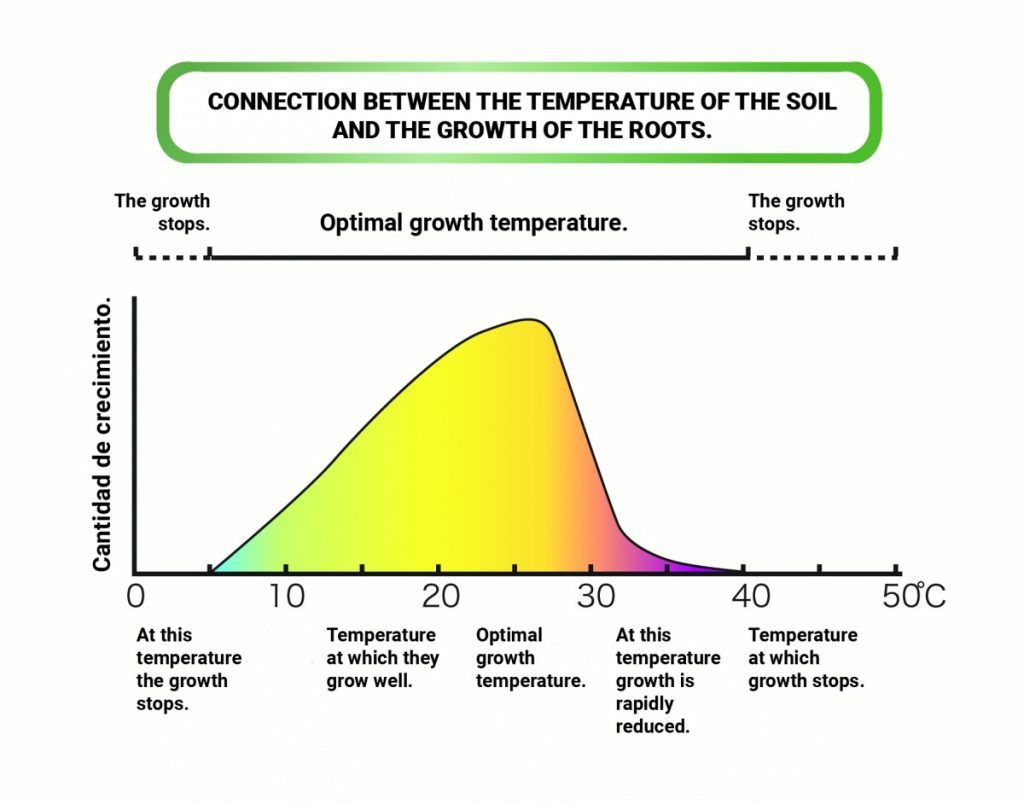Care of bonsai after a transplant

The time of transplant has arrived and you have everything ready. But, once the transplant is done, what should we do? What is the aftercare? So that all the transplant technique has a great success in your trees, aftercare is key. In this blog we recommend 4 necessary guidelines so that the post-transplant care of your bonsai is adequate and your tree recovers better and faster. It’s very easy. Join us!
The first irrigation
Immediately after transplanting your bonsai you must water it abundantly so that the dust that has been able to enter the substrate leaves. Look closely at the drain holes. You must water until the water comes out clear and transparent, without any soil or dust.
During the following days it is important to water properly. Touch the surface layer of the substrate and when it is dry, proceed to water. Every time we water when the soil is dry, we regenerate the oxygen in the substrate and that helps the root to grow.
Wind protection
After a transplant, the bonsai root system is delicate and has to recover. If we don’t protect our tree from the wind, it can cause two problems. The first is that our bonsai will dry faster demanding that the roots work harder to hydrate it. Since the roots are weak due to transplantation, this stress situation can lead the to loss of healing and hydration capacity of the root and end up dying.
The second problem is that bonsai is generating new small roots that are very delicate. If the tree is not well anchored and there is a lot of wind, it can move a little in the pot and break the rootlets that are forming. These small roots are very delicate, break easily and can die.
So place your bonsai protected from the wind and verify it was well anchored.
Fertiliser
The tree is recovering and must comply with its recovery processes. If we fertilize it, we force the tree to leave those processes aside and to devote to the absorption of nutrients. In addition, if the roots are weak by the transplant, the absorption of the nutrients of the fertilizer will be deficient.
To help your bonsai in this transplant process you can use “Vitabonsai”. This is an invigorator that contains among others, nitrogen, carbon, micronutrients and chelating agents. All these components favour the recovery of the roots, their growth and increase their protection against cold and disease. This invigorative is ideal for irrigation after transplanting your bonsai. If you use it you will make your tree root faster and better, achieving a recovery of your bonsai in a shorter time.
You can also use vitamins diluted in hormones, which have the same goal of Vitabonsai; manage to root your tree faster and promote its recovery.
So do not fertilise your bonsai until the growth season begins and use your Vitabonsai or another revitalizing mixture in the following irrigation.
Situation
Almost everyone recommends placing trees in semi-shade after a transplant. Generally, it is recommended between 2 and 3 weeks of semi-shade, and gradually take them out to the sun. This has an intention; avoid the dehydration of the leaves when the roots are not active. But this technique is not entirely correct. The purpose of getting the bonsai in the sun is so the temperature inside the pot rises. The increase in temperature produces the total activation of the roots and the healing and growth processes increase. This can only be done if we place the pot in the sun after the transplant. “Today, in the cultivation of bonsai, it is recommended to place the trees just transplanted in the sun, so that they take root faster.”
I would not like to finish without mentioning the relationship between soil temperature and root growth. According to botanical studies done worldwide, in winter, when the temperature is below 5ºC the growth of the roots almost stops. When it is spring and the temperature rises to 10ºC, the growth of the roots begins gradually. The maximum activity of the roots occurs when the temperature is between 25 ° C and 30 ° C. When the temperature rises from 30 ° C, the growth of the roots is reduced rapidly and when it exceeds 40 ° C it stops almost completely.
In summary; if you are going to monitor the hydration of your tree properly, then, you can place it in the sun after having performed the transplant (as explained above). If you are not going to have time to monitor the hydration, it is better that you place your tree in the semi-shade and then gradually take it into the sun. Everything will depend on the time you have to monitor the irrigation and that your tree does not become dehydrated.
As you can see, the care is logical and very simple to carry out. If you follow them to the letter, the recovery of your bonsai will be optimal. Its growth will be strengthened, extending its life and your enjoyment.
Get to work and remember… after transplanting your tree needs a lot muchigomi.
See you next transplant!
About the Author
Luis Alejandro Herrera
Spreading the art of bonsai is his passion. As a reference in the Latin American bonsai world, Luis studied and participated as an instructor for more than 15 years within the Venezuelan Bonsai Society. He had the opportunity to expand his knowledge with great masters from the world of bonsai like Pedro Morales, Nacho Marín; and within the European school with the Italian teacher Salvatore Liporace. He managed to be in the first place of the Caracas 2016 New Talents Contest and successfully completed the master class of the European School of Bonsai in Puerto Rico. During his career he has been a permanent instructor of the Venezuelan Society of Bonsai.
Categories
Bonsai cultivation and care (54)
Bonsai gift (2)
Bonsai pests and diseases (6)
Bonsai repotting (3)
bonsai substrates (2)
bonsai tools (1)
Bonsai work (10)
Ceramic pots (3)
Chinese culture (2)
Chinese culture (1)
Corporative Mistral Bonsai (8)
Cuidados del bonsái (22)
Cultivo del bonsái (20)
Dead wood (2)

